Abstract: In order to meet the needs of large-scale computer network management development, a network remote monitoring system for monitoring and processing the health status of network terminals is proposed.
By referring to the agent technology of modern artificial intelligence, this paper completes the environmental data collection and simple analysis and judgment of terminal equipment, reduces the computing pressure of service control equipment, reduces the network transmission data traffic, and realizes a large-scale computer with autonomy and intelligence. Network terminal remote monitoring system architecture. The processing performance of the entire monitoring system is greatly improved, and the impact on the controlled network is reduced. Through the specific software system analysis, the program flow with Agent technology as the core is designed, and the program framework of Java language implementation is given. Improve the overall performance of traditional systems.
0 Preface
With the rapid development of computer and network technology, computer application technology has penetrated into all aspects of work and life. The efficient operation of modern production manufacturing and modern service industry is increasingly dependent on computer and network technology. With the expansion of the production industry chain and the refinement of business division, the number of computers included in a business network is increasing, and the geographical coverage of the network is also growing. The computer network scale and network structure are changing with business needs. For example, the power distribution network system may cover several provinces. The network of bank ATMs will cover one city or even several cities. The computer teaching network of higher education institutions may also cover different campuses of a city to ensure the normal life and personal safety of Skynet. Will cover the entire city. While people enjoy the efficiency and convenience of computer networks, their reliance on computers and networks is increasing. However, computer network operation faces many potential risks. The operation of network equipment depends on the normal operation of equipment hardware and software, the power supply system of the equipment is unstable, the equipment storage failure, software accumulation error, software virus, etc. Problems in one link may cause the device to malfunction or stop running. If there is a problem with the network node, it will affect the normal operation of the business system. If there is a problem with the key nodes of the network system, it may cause the entire network to collapse, causing huge economic losses that are difficult to estimate for the enterprise unit. However, the distribution of network nodes is wide. It takes a lot of manpower and material resources to perform daily inspection and maintenance of network nodes manually. Therefore, how to monitor the running status of the network equipment, prejudge the nodes that may have problems, discover the problems existing in the operation of the network equipment and deal with them in time, and reduce the possibility of network equipment problems, is an important issue. Through the all-weather automated network operation status monitoring, the network equipment operation risk can be reduced, the normal operation of production and life can be guaranteed, and huge economic and social benefits are brought about.
Remote, automated, and intelligent network equipment detection software systems are effective means to solve the increasingly prominent contradictions. Through the application of Agent technology, the development and improvement of information collection of one of the key technologies of the system can improve the operating efficiency of the monitoring system. The Agent mechanism is used to collect the operation information of the monitored network terminal equipment, and the monitoring agent performs statistics and analysis on the collected system operation information, and independently determines the running status of the monitored terminal, and gives an abnormal system error type and location. The network location can improve the efficiency of the system troubleshooting and optimize the structure of the monitoring system.
1 Agent Technology Introduction
The concept of Agent is proposed by Professor M. Minsky of the United States. Agent is a software process. By collecting information and judging and reacting to changes in its external environment, Agent should be self-managing and self-processing. It should have the characteristics of artificial intelligence. It can gain experience and improve its processing ability through the accumulation of information collection and processing. It can respond to the collected information according to the pre-set principles. In general, the monitoring agent can be divided into two types: intelligent agent and non-intelligent agent, namely, cognitive monitoring agent and reactive monitoring agent. The main difference between the two agents is that the cognitive monitoring agent can perform the collected information. Self-learning and certain judgment and reasoning ability can perform deductive reasoning according to the strategy adopted by itself and other strategies adopted by the monitoring agent. The reactive monitoring agent takes corresponding reaction actions according to changes in the collected system operation information. Due to the existence of a large number of complex fault judgments, the system can realize the Agent function through a simple combination of cognitive and reactive methods, and complete a large number of simple fault judgments by the Agent, and transmit the original information and complex fault judgments to the The Agent controls the server to complete.
2 remote monitoring system software architecture
Because Agent has autonomy and intelligence, the network equipment state information sampling agent developed by Agent technology can complete basic data collection and analysis autonomously. The simple analysis result is transmitted to the Agent control server for storage and response processing, which greatly reduces the control and information processing workload of the Agent control server on the front-end Agent data collection, and also makes the background system management simple and fast, and improves the response speed of the entire system. . Agent-based technology The remote network monitoring system adopts the triple-architecture structure, namely the device information collection agent, the agent control server, the database server, the fault emergency response server and the system management control terminal. In order to improve the compatibility of system management to the platform, system management adopts B/S mode for system mode design. The device information collection agent is programmed by JAVA language to improve the compatibility of the collection to different system platforms. The system management work terminal adopts ASP. NET programming implementation, through the different system platform can easily achieve the management of the Agent control server and release control commands. Through such an implementation strategy, the compatibility and scalability of the monitoring system can be improved, and the active monitoring function such as communication between the emergency response processing server and the Agent control server, and emergency message notification can be conveniently completed by expanding the interface communication. The mobile communication port is designed to realize the connection between the system device and the mobile device, and the system can well support the mobile user login and management system. The architecture is shown in Figure 1.
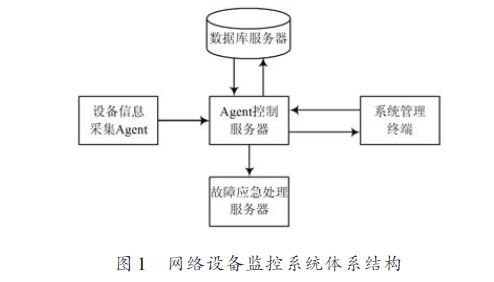
According to the characteristics of Agent, the software logic model of the network remote monitoring system is divided into five layers: it is divided into data acquisition layer, data management layer, data analysis layer, data processing layer and data representation layer. The core thread at each level is data. The data collection agent of the system software is distributed on each monitored network terminal computer, and runs in the form of a service program with the device, and the agent runs during the entire operation period of the device. The data management layer, the data processing layer and the data analysis layer software module run on the Agent control server, and the data presentation layer can run on the system management terminal. The administrator can monitor and manage the system in the system management terminal and the remote terminal, and process the result at the same time. If it is necessary to generate the indication information of the emergency service, the emergency service server can generate the corresponding emergency service task.
3 Equipment Information Collection Agent Design
Since the number of monitoring terminals is large in the whole system, and there is only one control server, when the system is busy, the control server needs to complete a large number of data management and data mining event generating operations. When monitoring a large number of terminal monitoring points, due to the large amount of centralized processing data, processing delays are generated, and the emergency processing speed of the entire system is reduced. By using Agent technology, the simple task of some monitoring servers is moved to the terminal agent, which reduces the transaction processing strength of the server, and can improve the response speed of the abnormal situation.
Generally, the workflow of the device information collection agent is as follows: when the program is initialized, it becomes an information collection agent instance Col-lect_Agent, and then the agent starts its own sensor (Sensor) to obtain the required information from the environment to be collected, according to The collected information takes corresponding actions to respond to changes in the agent environment [8]. The monitoring terminal runs two Agent modules, namely, information collection Col-lect_Agent and instruction execution Instruct_Agent. The information collection agent judges and processes the collected information. Forming a judgment report and performing corresponding processing according to the judgment result, and then transmitting the judgment report and the collected data to the Agent control server to complete the information operation record. The Agent controls the server to store and respond to data and reports. The server periodically evaluates the collected data and reports, and at the same time, judges the conditional parameters of the report that may be erroneous and sends it to the instruction execution Instruct_Agent, and the instruction execution agent completes the task of judging condition update and system restart according to the instruction. The program runs in a loop. The program flow of the two Agents is shown in Figure 2.
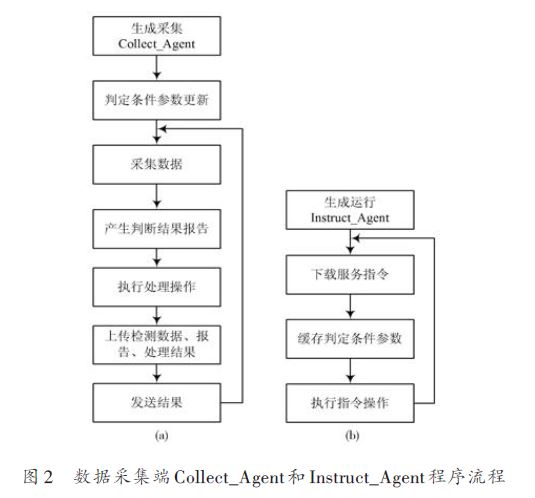
The data acquisition and command processing of the monitoring terminal implemented in Java language is based on the core code framework of the Agent:
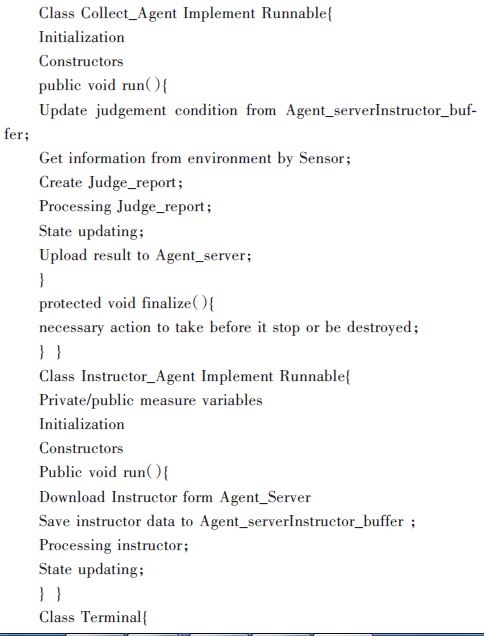
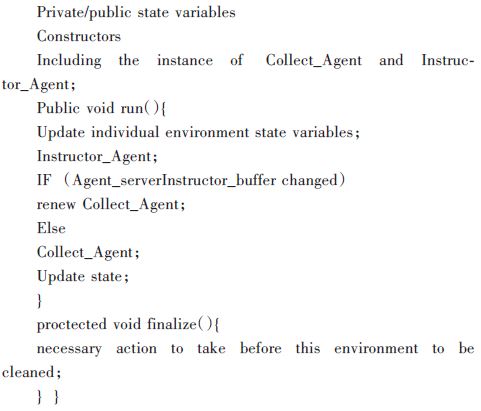
4 Conclusion
Through the use of Agent technology, the system fully utilizes the characteristics of Agent's autonomy, intelligence and collaboration on data monitoring, reduces network communication load and data traffic during system operation, and reduces information processing and operation of control server. The strength increases the efficiency of the control server processing and the overall system failure response speed. Further improvements in the system include improving the self-learning algorithm of Agent and further researching Agent intelligent processing to achieve the unification of distributed decision-making and centralized management. (Author: Zhu Xianzhi)
Double Side Board, Base Material: FR4 TG135. copper thickneess 1oz finished. Immersion Gold surface treatment with matt black soldermask. Thin board thickness 0.2mm. Min.line width/Min.line spacing 0.15/0.15mm. E-test: 100%
The double-side-board is one of the most products we produce. Our double-sided plate thickness can be treated from the 0.2-5.0mm. and we can do the surface treatment can be ENIG, HASL, LF-HASL, Immersion Tin,Immersion silver,Flash Gold(Gold plating), OSP and etc.
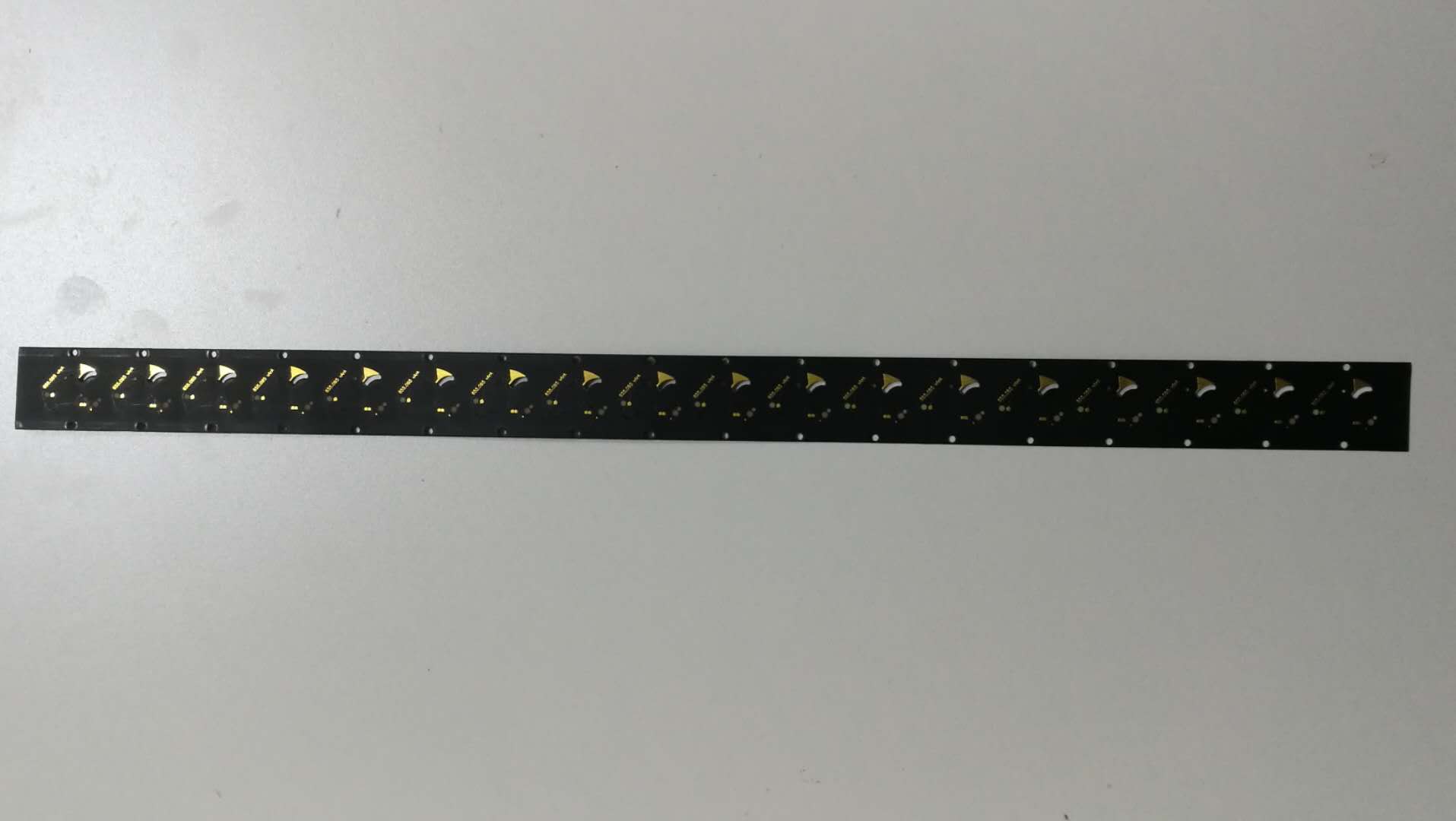
Double Side Board
Double Side Board,Double Sided PCB,Double Sided PCB Board,PCB Circuit Board
Orilind Limited Company , https://www.orilind.com